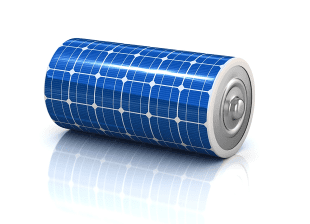 Energy storage is expensive but offers a host of opportunities, both in revenue generation and cost reduction. Paired with solar, energy storage is even more attractive, offering savings on the energy portion of the bill and access to ITC benefits when eligible — through 2016, anyway.
Energy storage is expensive but offers a host of opportunities, both in revenue generation and cost reduction. Paired with solar, energy storage is even more attractive, offering savings on the energy portion of the bill and access to ITC benefits when eligible — through 2016, anyway.
The chart below, presented by GTM Research senior grid analyst Ravi Manghani at Solar Power International, highlights a number of reasons end customers might consider before implementing a solar-plus-storage system. Some of these benefits, such as ancillary services and demand response, are not yet available to end customers in all states.

Manghani went on to describe the future of solar-plus-storage in the United States, and in doing so, he identified four trends that are driving the current market.
System sizes
In the residential solar-plus-storage market, Manghani identified 5-kilowatt/10-kilowatt-hour storage systems as the sweet spot.
On the commercial side, the industry is focused on the tradeoff between system size and costs. Most systems range between 20 and 30 kilowatts in size, driven by demand-charge reduction opportunities for small to medium-sized commercial customers, for which demand charges can account for 50 percent or more of their electricity bills. Manghani believes 50-kilowatt or larger systems for larger commercial and industrial end customers will be the next growth frontier for the market as system costs come down.
Winning technologies
The current battery technology battle is between lithium-ion and lead acid. Lithium-ion vendors highlight its better density, ramping and cycle life. It’s the preferred technology for most urban markets, where space is often at a premium. However, safety questions and its higher price point have prevented widespread adoption over lead acid.
Manghani suggested that flow batteries and aqueous chemistries are beginning to gain traction, especially in long-duration microgrid and remote applications.
Partnerships
To date, there are few pure-play solar-plus-storage vendors in the market. Instead, existing solar companies are partnering with energy storage firms to create alliances.
“Solar companies have a head start in terms of customer acquisition strategies that energy storage companies can take advantage of through such partnerships,” said Manghani.
Manghani cited several other channels emerging for solar-plus storage adoption, including through automakers, homebuilders and corporate end users.
Financing
Due to the technology’s high cost, vendors have created no-money-down solar-plus-storage business models for peak demand management, aggregated DR and ancillary services applications. As a result, system integrators are at the forefront of acquiring third-party financing.
Manghani noted that there are few third-party financing products currently available for end customers, and many commercial lenders are still hesitant to finance the storage portion of solar-plus-storage.
Source: Greentech Media. Reproduced with permission.










